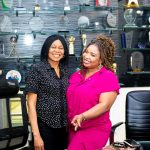Most of the national and international evaluation tools used in measuring outcomes of Youth Development projects by evaluators and program/project managers adopt negative-driven indicators to assess the situation of the youth.
Negative-driven indicators such as youth prevalent rate of HIV, the rate of youth unemployment, crime rate, teenage pregnancy rate, percentage of school drop-outs, etc are so common.
Though these indicators have their merits, it has been found through various youth-oriented programs that they do not reveal the whole picture nor tell the whole story about the experiences of the youth, their learning processes, and the various ways they acquire knowledge for developmental purposes.
Indicators that mirror positive conditions and experiences of the youth such as school enrolment rate, percentage of those not infected with HIV, the rate of youth employment, the performance rate of youth in life skills activities, the rate of youth in productive ventures, etc are more significant in telling the whole story.
Evaluators and program/project managers need to start generating new research questions and pair them with accessible national and international data points that will tell a whole story of what it takes for communities, aided by the government, to build support for positive youth development activities/programs/projects with the youth at the center of it all. As some program/project managers usually plan to reduce all the negative trends that inhibit youth development focusing on negative indices, others should strive to increase all the positive trends that promote youth development focusing on positive parameters.
Evaluators should use good qualitative tools to aid the quantitative ones in assessing the progress and achievements of youth development projects. Deliberative Discussion, Storytelling, Theatre For Development, and Focus Group Discussion are good qualitative tools that will give immediate feedback and reflections from the ‘out-of-the-box’ thinking without the usual problem of ticking the boxes and filling of empty columns and rows.
There are two forms of Youth Development that Youth Development Actors always face. They are:
Development of Youth (DoY): This refers to the strengthening of the relationships/networks (social capital) among the youth using strong youth-driven projects for developmental purposes. Here, youth are seen as a value and respected asset to society. And so, policies and projects always focus on the evolving developmental needs and tasks of societies and involve youth from the conception stage to the execution stage as Youth Development Actors rather than Clients, and as Producers rather than Consumers. DoY easily ensures sustainability, acceptability, and ownership of the project by the youth.
Development in Youth (DiY): This is a way of improving/building the capacity of the youth through youth-based projects to achieve some set objectives. Here, youth programs are tailored towards ‘fixing the troubled youth’. This does not recognize any potential among the youth. It sees them as Clients and Consumers of programs and not as Youth Development Actors and Producers or co-Producers. Though DiY could be replicated elsewhere, it dies quickly and cannot be extended beyond the project life cycle except if there is a serious sustainability plan with financial implications. Unfortunately, most of the Youth Development projects in Africa, especially in Nigeria adopt DiY – they die quickly.
Folorunsho Moshood writes from Ibadan, Oyo state. He is the Programme Director, Educare Trust, Coordinating Consultant, Relevant Actions International &International Civil Society Fellow, Kettering Foundation, Dayton, Ohio
















